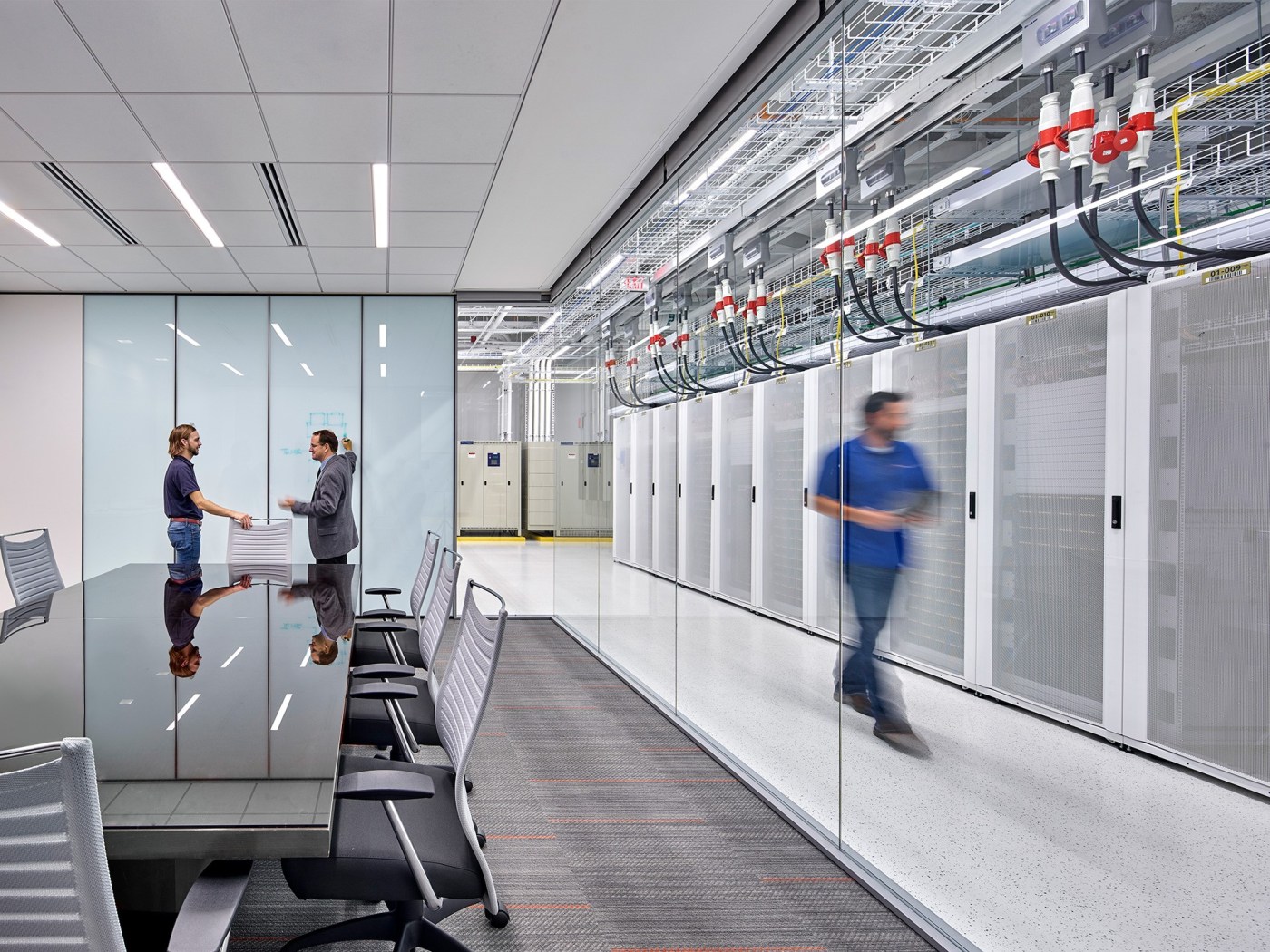

By: Thomas Cannady, vice president of network operations; Tim Glatz, head of interconnection — DataBank
Many manufacturers operate smart factories internally. The next step: Get smart in the cloud.
The rise of smart factories has transformed the industry. Robotic process automation, devices connected to IoT networks, and other digital technologies increase manufacturing efficiency and productivity. However, to achieve a complete digital transformation and leverage AI-driven analytics, manufacturers need to tap into smart technologies in the cloud.
This article examines how hybrid IT architectures allow manufacturers to complement on-premises IT with modern technologies in the cloud. We also discuss how colocation data centers provide the best way to connect to the cloud—through interconnections that enable real-time, low-latency data exchanges and secure connectivity.
With this approach, manufacturers can augment their production processes to operate plant machines even more efficiently.
Inside a smart factory, manufacturers require 1-5 millisecond latency for connected machines and digital processes. This increases production and helps keep their workforces safe. By leveraging automation technologies, facilities operate more efficiently and increase their product margins.
For latency this low, the processing must stay inside the factory walls, using dark fiber connectivity to an on-premises data center. IT can’t push factory data processing to a remote data center. The time for the data to get there and back to execute decisions might impair production and cause safety issues.
Keeping the data processing internal also allows for systems to make tactical production decisions in real time. If a robot on the floor malfunctions, the system can make split-second decisions on whether to shut the system down.
Onsite smart technologies generate huge data volumes. Those volumes grow exponentially when introducing artificial intelligence to mine contextualized data for strategic insights. This includes observability tools for managing a range of processes to avoid costly downtime:
Managing these processes does not require the same ultra-fast latency as on-the-floor manufacturing processes. However, the large data volumes do require scalable CPU firepower and storage capacity. This in turn demands high power density infrastructures. The compute resources must also have sufficient cooling to run reliably.
Outside the walls of a smart factory, manufacturers can collect data on how they manage production. The factory can then tie into observability tools in the cloud that act as the brains of the factory.
As tools collect data for tactical decisions inside the factory, the cloud environment processes the data for strategic decisions. In the cloud —with its scalable compute resources— data processing can interact with AI systems to make decisions and kick off automated processes.
To proactively manage maintenance contracts, for example, the system identifies a machine that will break down soon and determines the fix. The process automatically orders the replacement part and schedules a resource to install it. By eliminating manual intervention, this process executes the fix more efficiently—and before any negative impact on production.
Within an on-premises data center, manufacturers find it difficult to allocate the necessary CapEx to meet the specs for High-Performance Computing. Enter the multi-tenant colocation data center — with the power, space, and cooling infrastructure to scale and drive down the cost of compute resources for mission-critical applications.
Just as important for manufacturers, leading colocation data centers can provide private cloud, bare-metal environments. This allows manufacturers to increase their security posture and enhance controls for safeguarding sensitive data.
Another vital colocation attribute is interconnection services. From anywhere in the world, end users get low-latency access to workloads and data along with system redundancy.
For instance, many automotive plants and manufacturers from other industries rely on DataBank colocation data centers to support their smart factories. From cloud on-ramps to blended Internet access and cross connects, the DataBank interconnection ecosystem scales as applications grow—with power and cooling infrastructures to support central data repositories:
The DataBank Interconnection Marketplace gives manufacturers access to more than 200 telecom carriers. Using our interconnection portal, manufacturers can see all the carriers that connect to each of our 73 data centers located in the top U.S. metros. Manufacturers can explore which carriers provide telecommunications, fiber, and network services near their plants to achieve the lowest latency possible —typically between 10-40 milliseconds.
DataBank partners with these carriers to offer intra-building risers, label switching, and wide-area-networking services. These services ensure manufacturers connect with applications and data in the cloud quickly and securely from within their internal IT environments. Through our carrier partnerships, customers can connect to the cloud within minutes.
On top of the performance delivered by the DataBank interconnection ecosystem, we offer strong security controls. These include private connectivity to smart factories to prevent man-in-the-middle and DDoS attacks. Within this private connectivity, manufacturers can apply data encryption.
To promote a holistic approach to information security, DataBank follows the certification requirements for ISO/IEC 27001:2022. The world’s best-known standard for information security management includes vetting people, policies, and technology to assure effective risk management and cyber-resilience.
DataBank also follows the standards set by the National Institute of Standards and Technology (NIST). Our NIST certification allows us to support manufacturers who interact with federal, state, and local government agencies and those who need colocation services using a repeatable, secure methodology.
As your external processing needs scale, we can help you on your journey to a hybrid environment that includes colocation and private cloud services with easy access to public clouds. DataBank assists you in deciding which data centers and telecom providers make the most sense for each application workload. With our help, you can scale your infrastructure and platform services based on your needs, consuming only what you need so you can grow IT at a predictable and manageable pace.

Discover the DataBank Difference today:
Hybrid infrastructure solutions with boundless edge reach and a human touch.